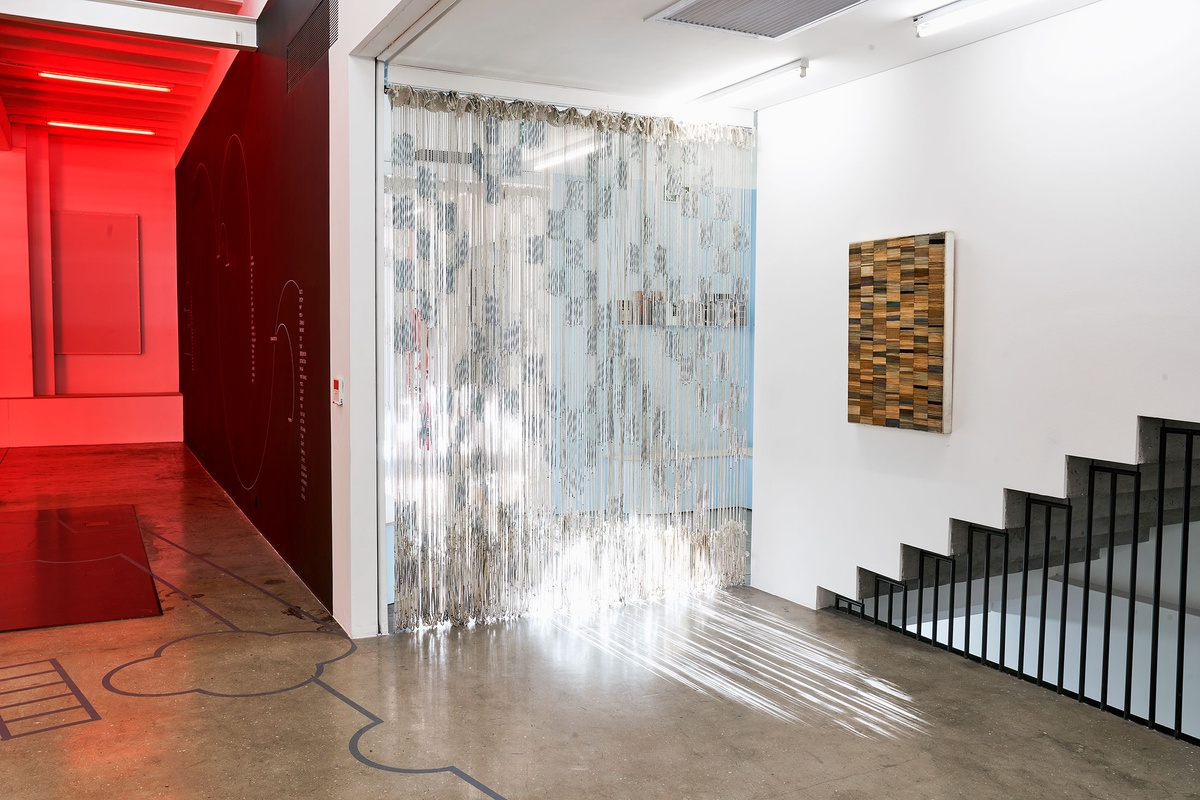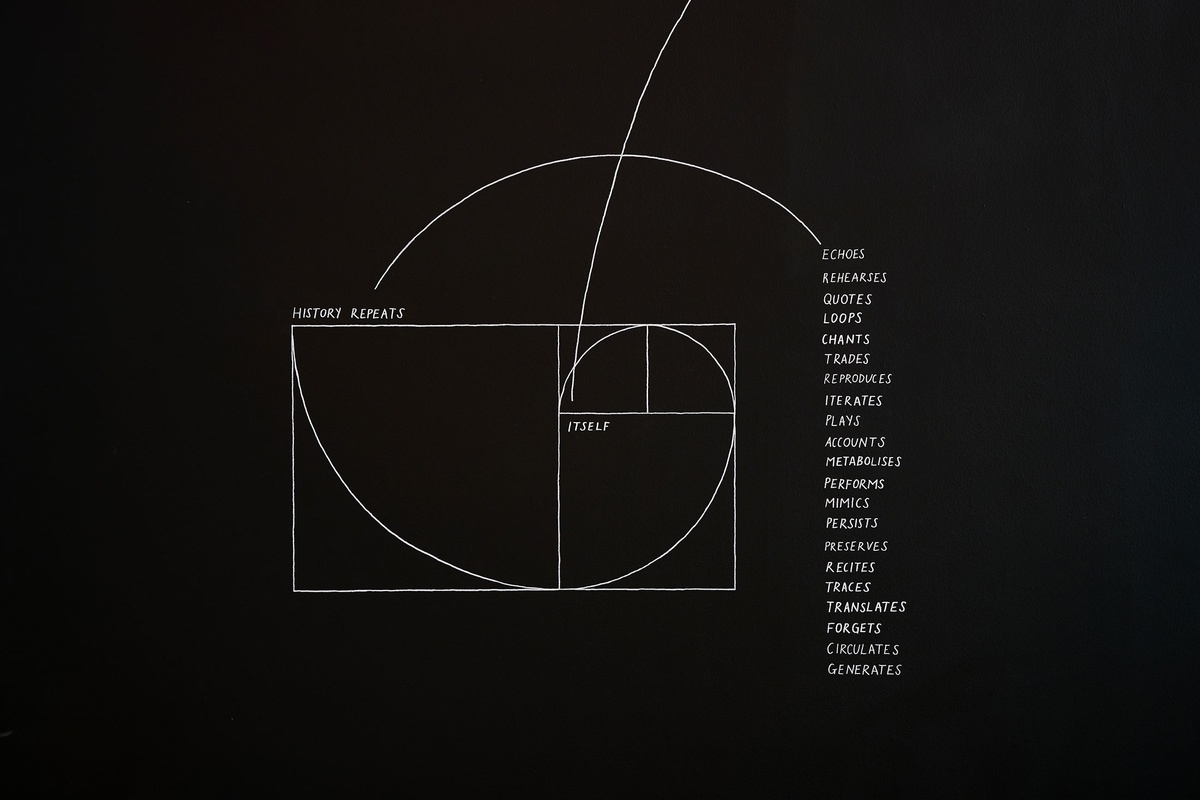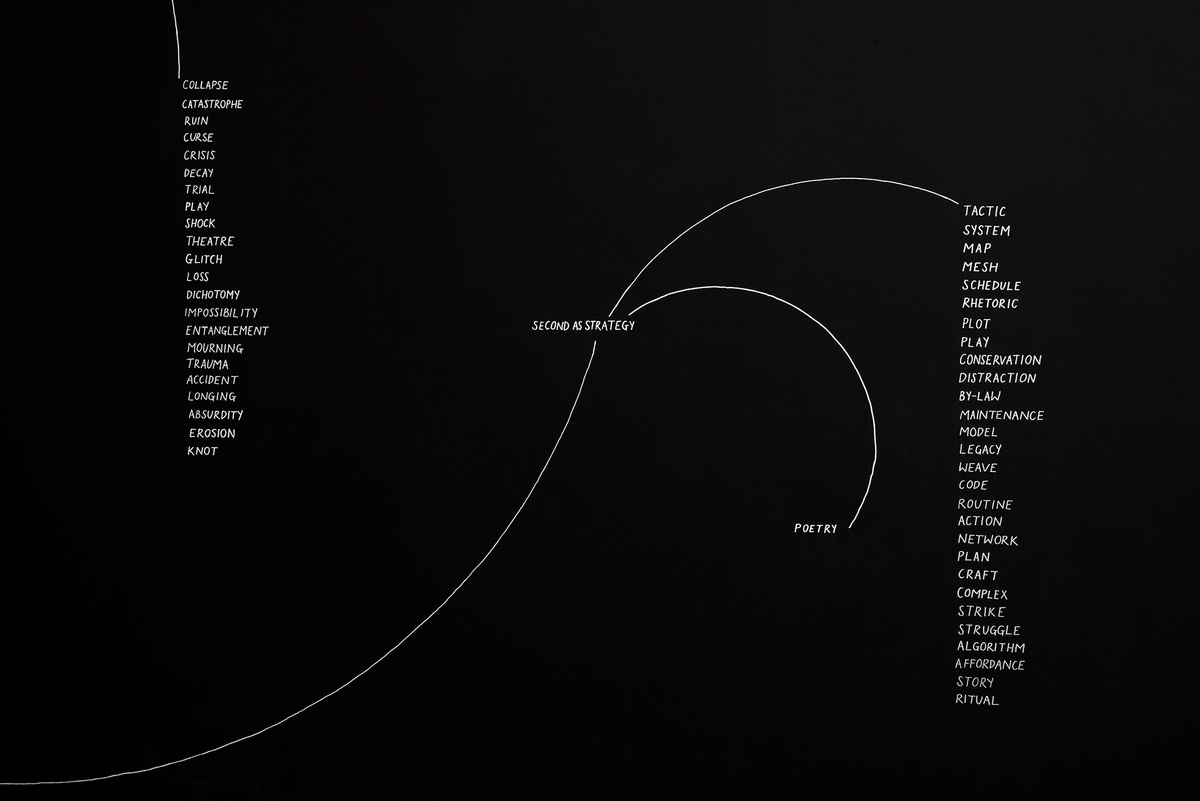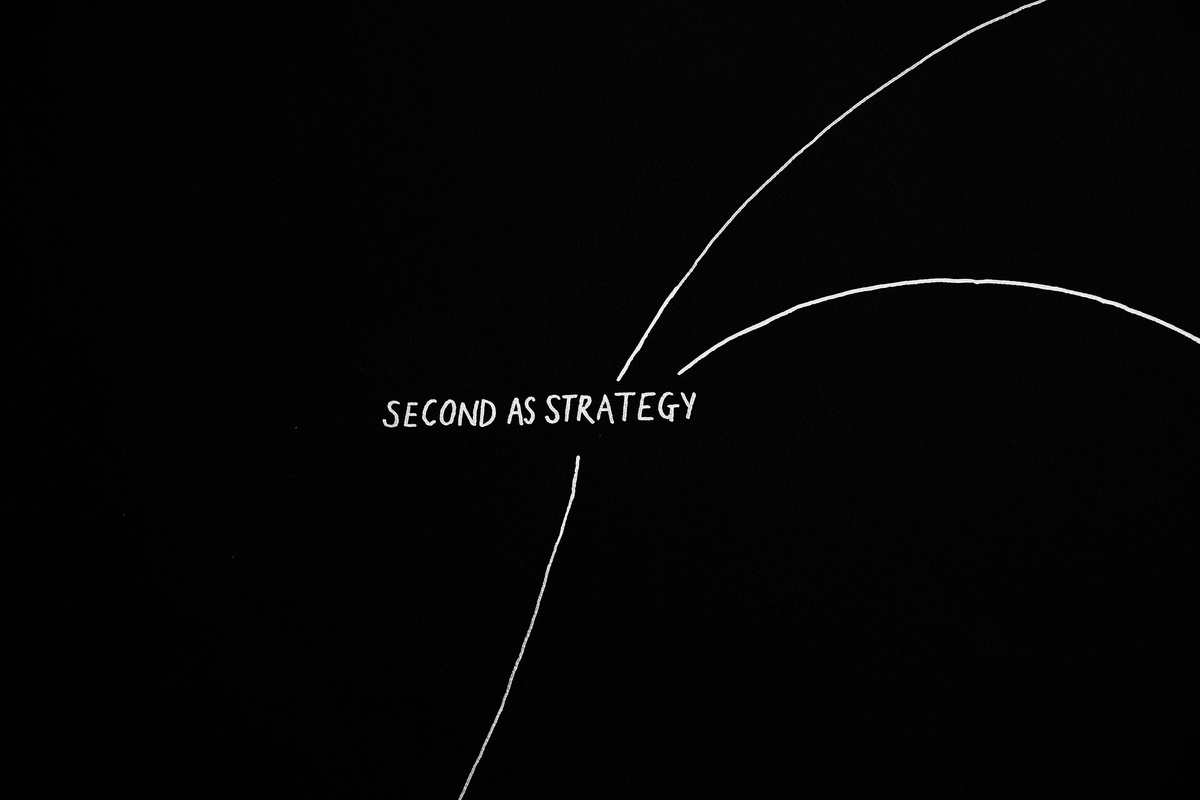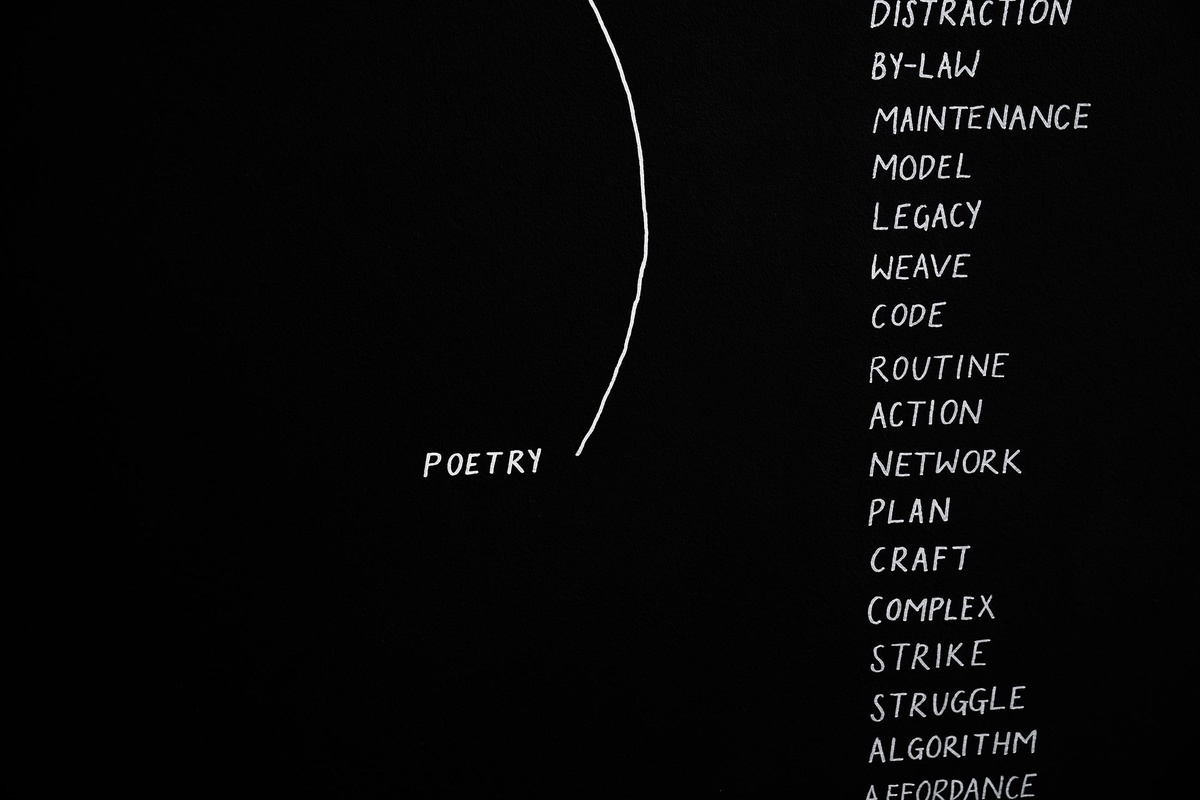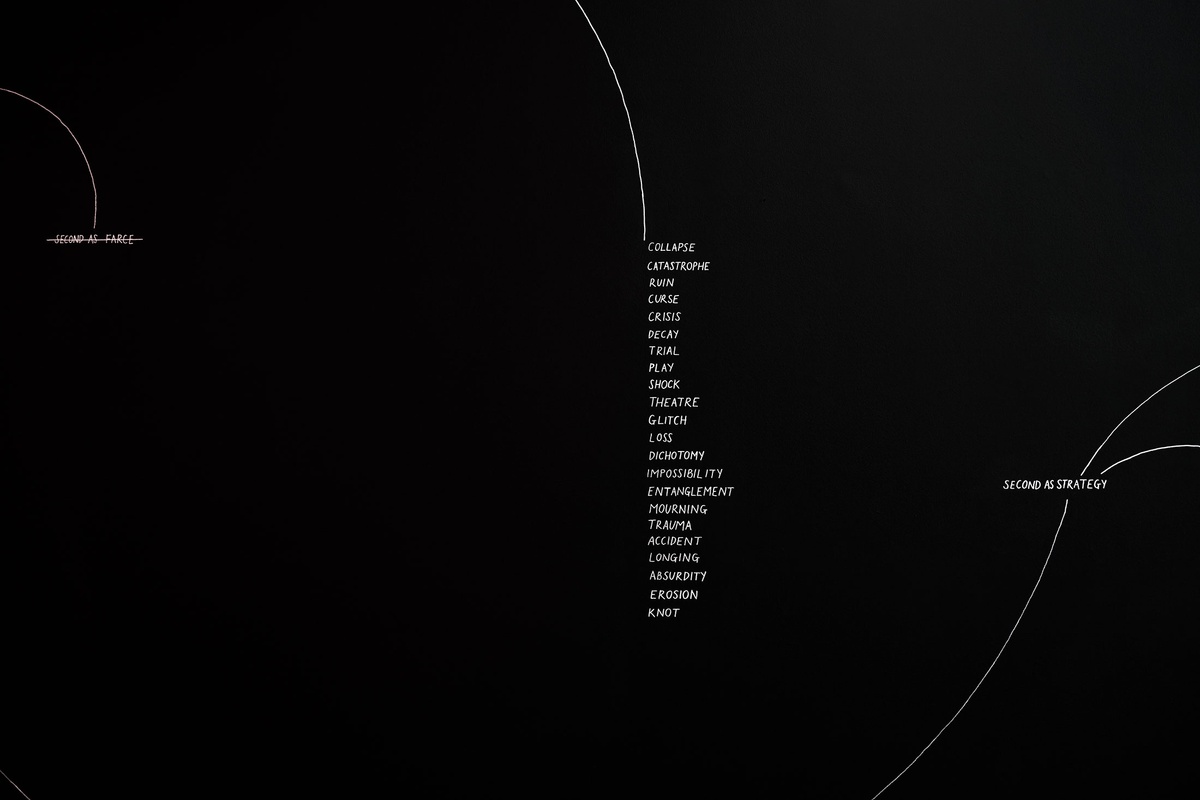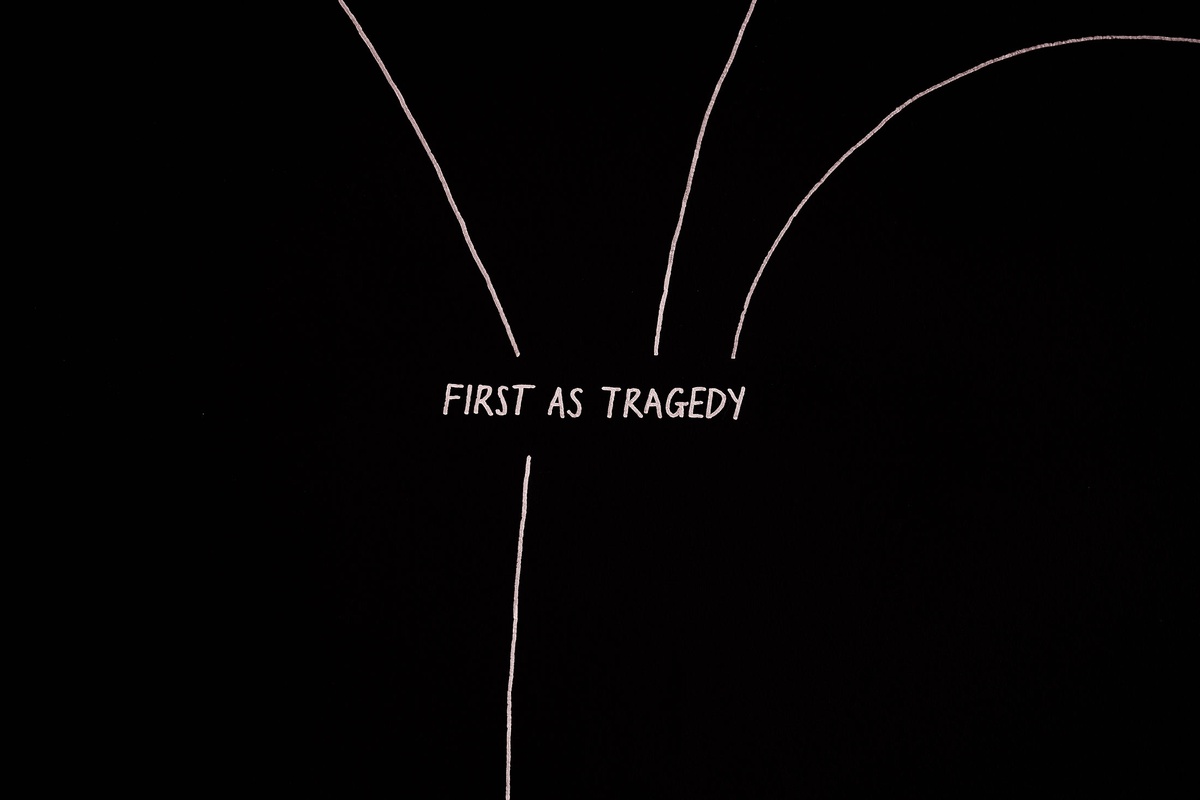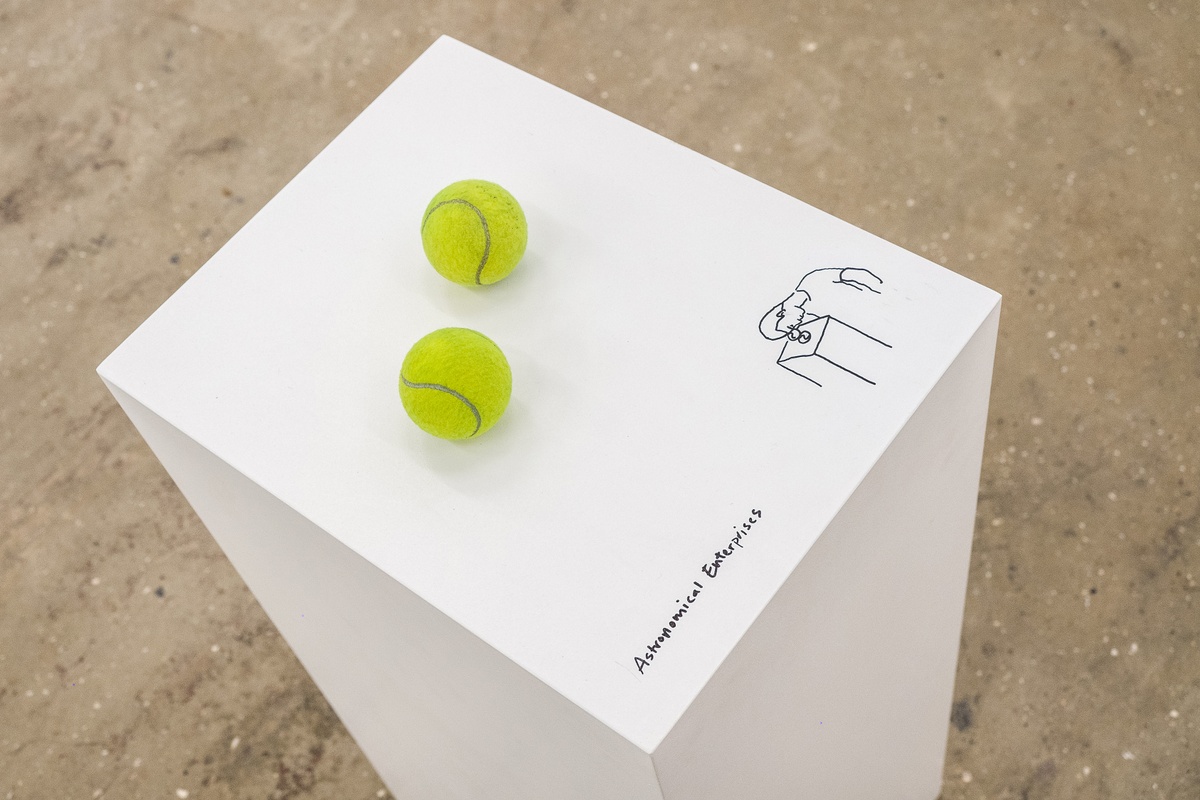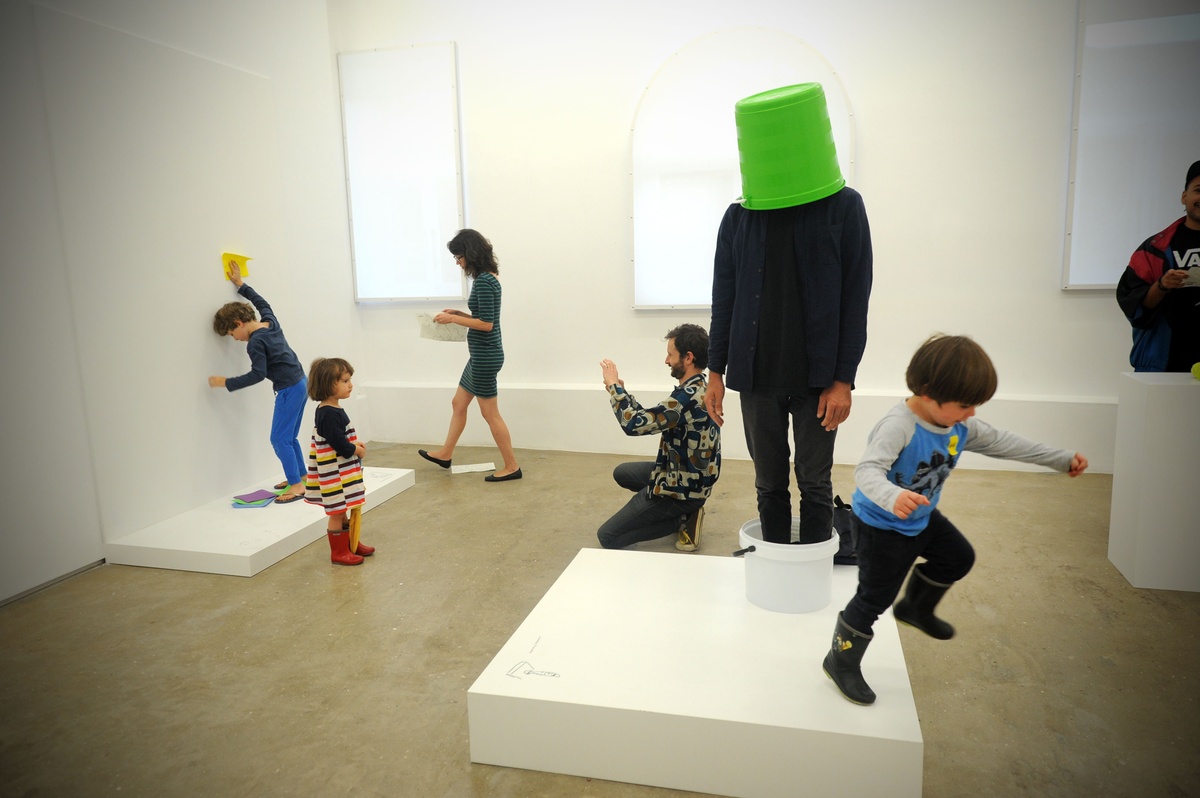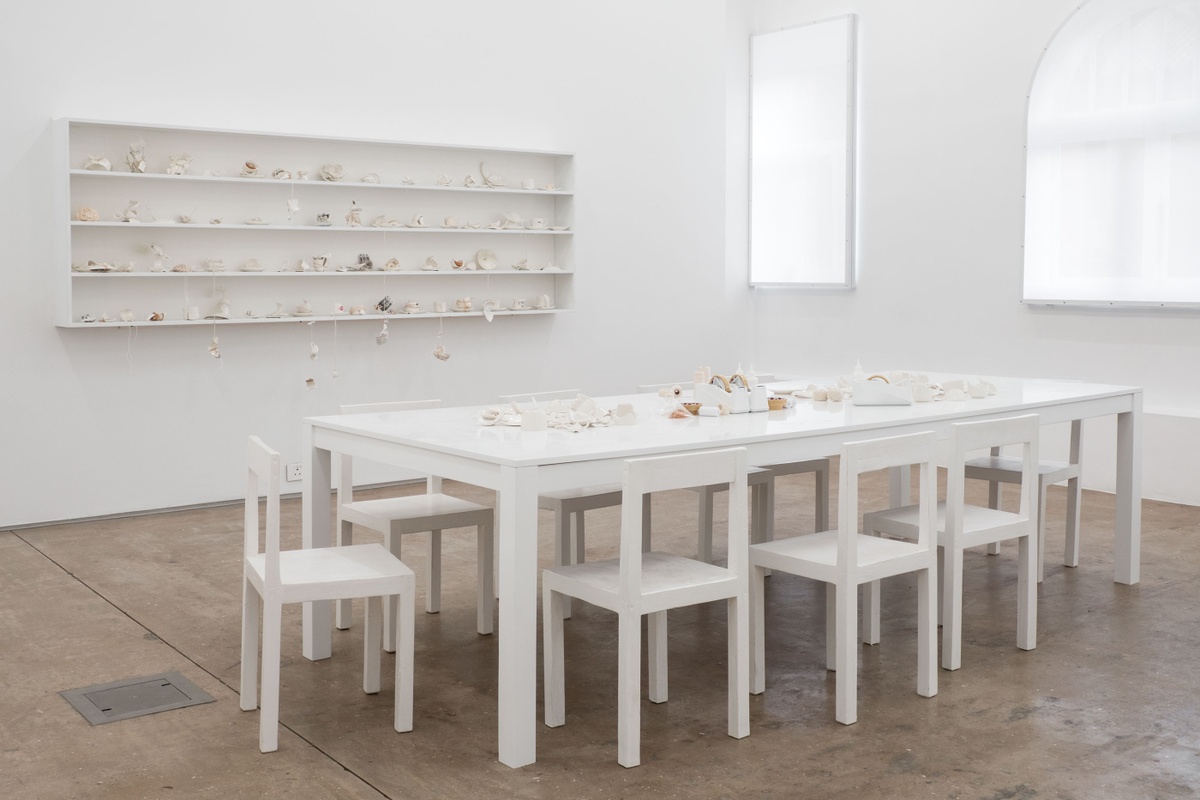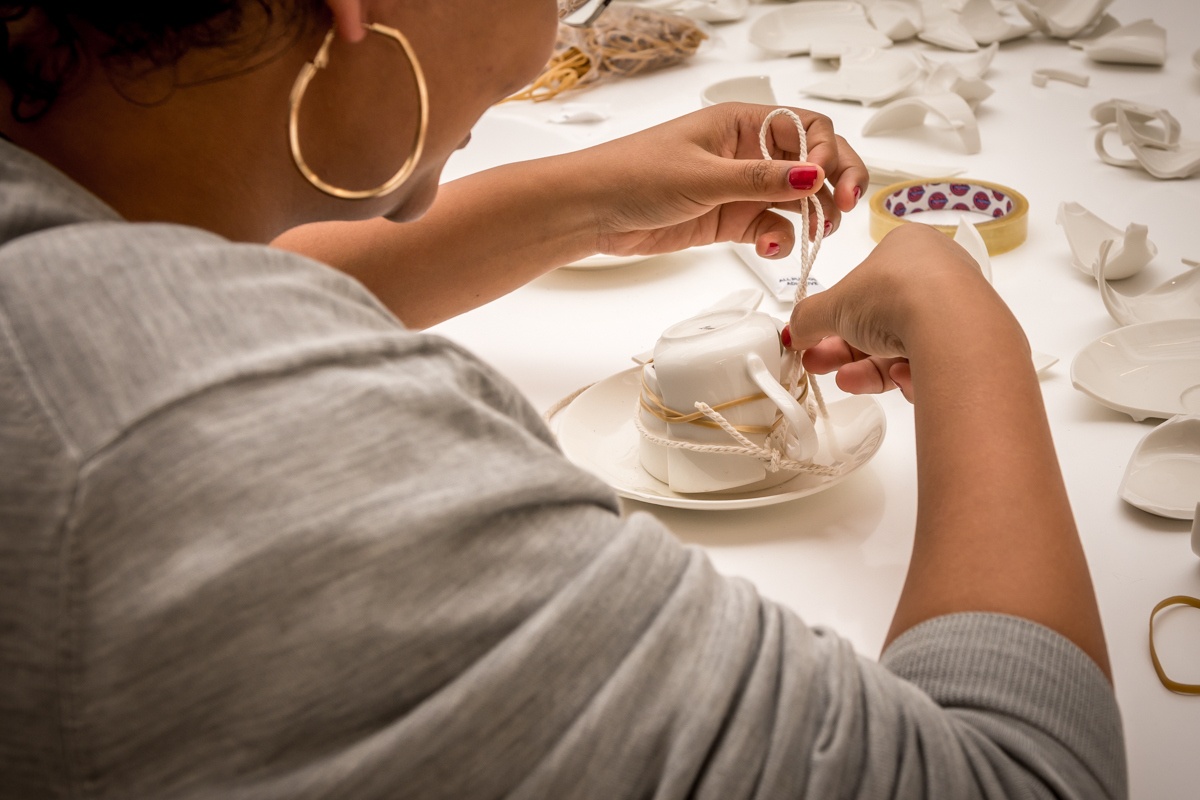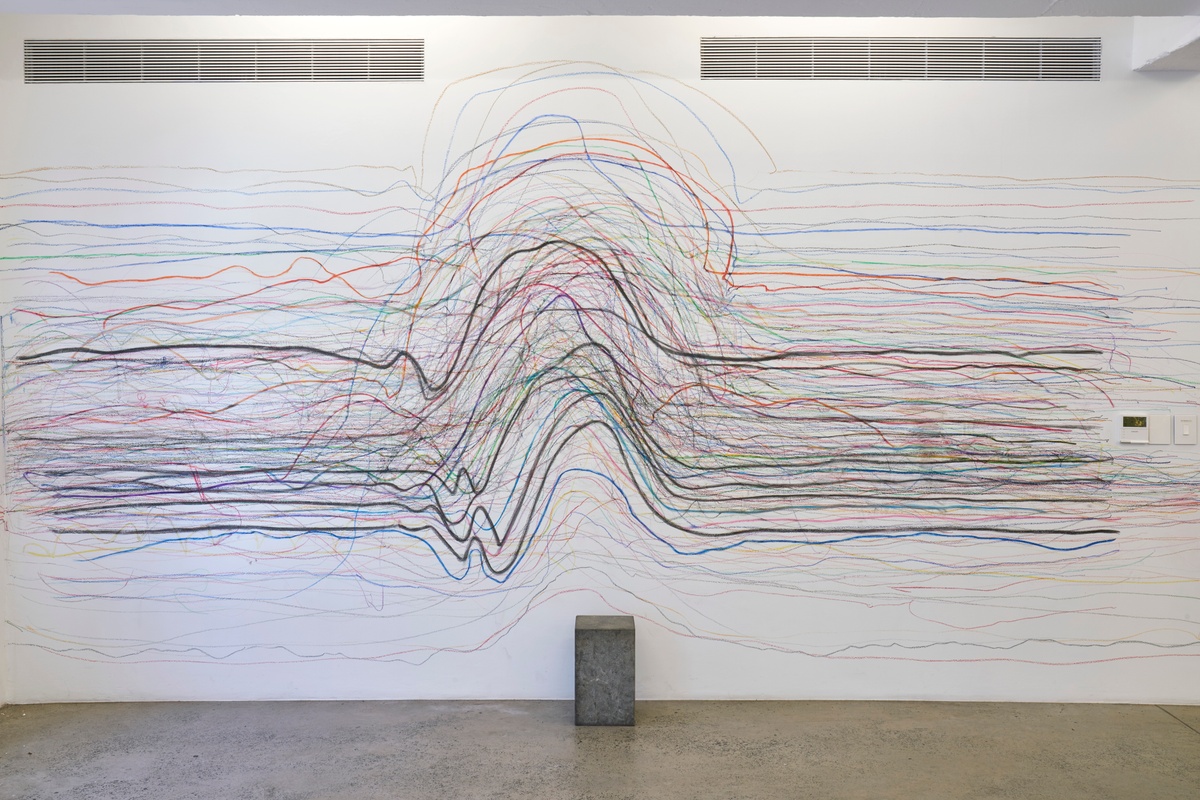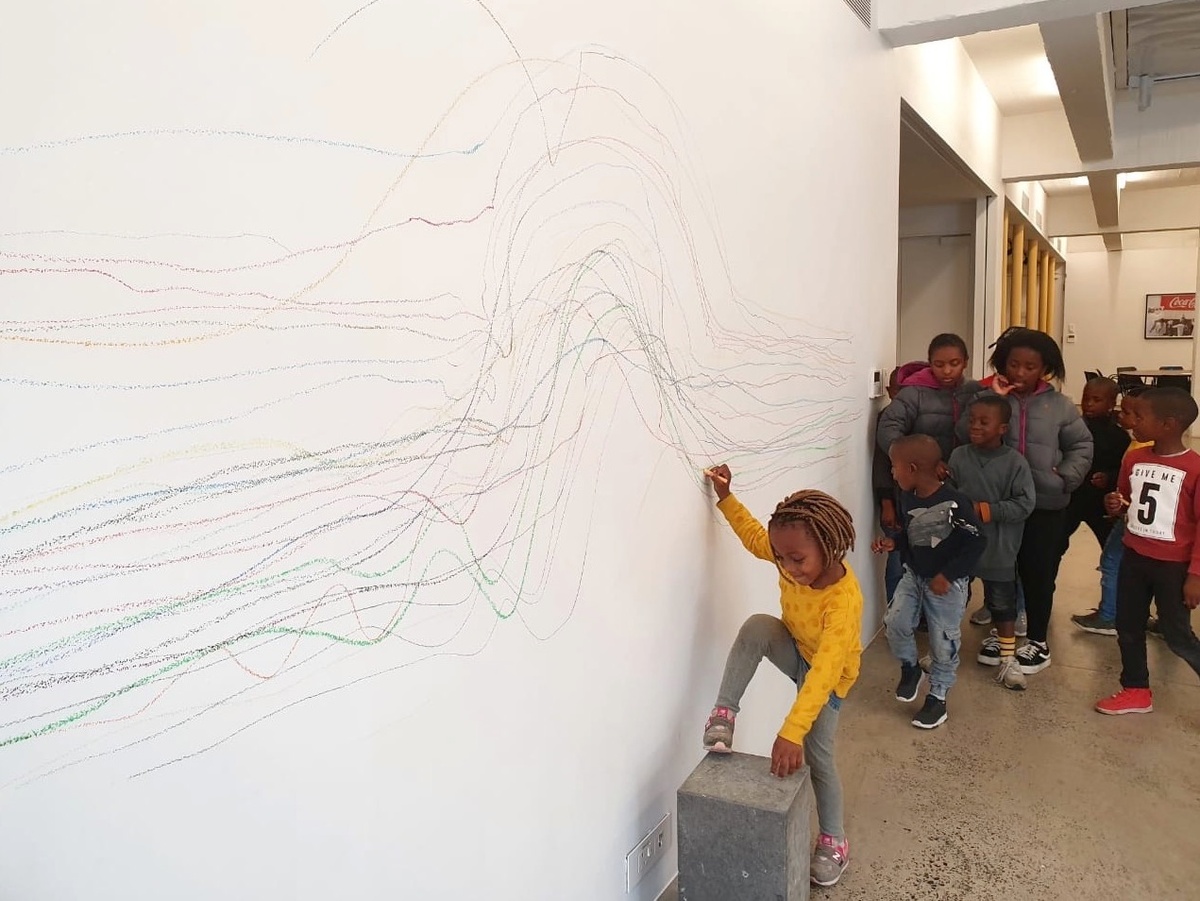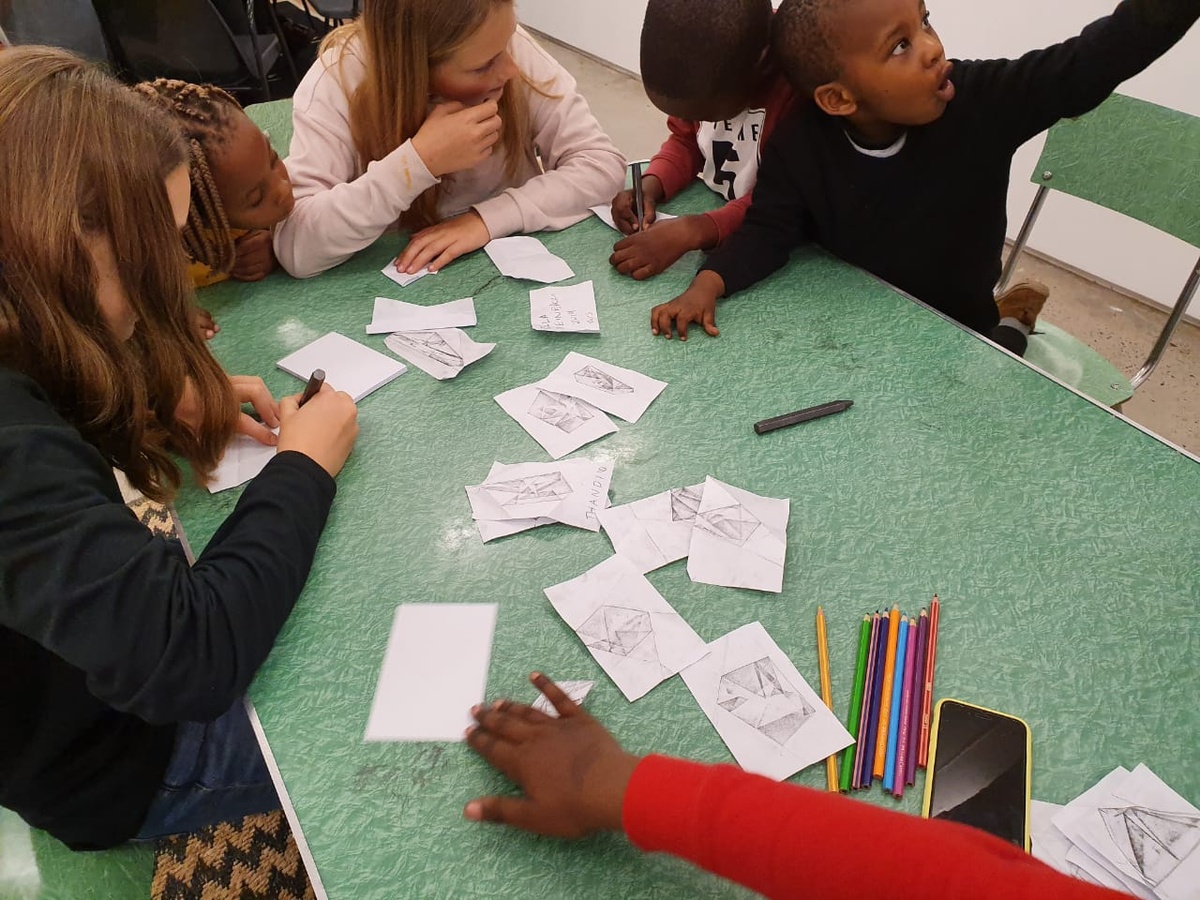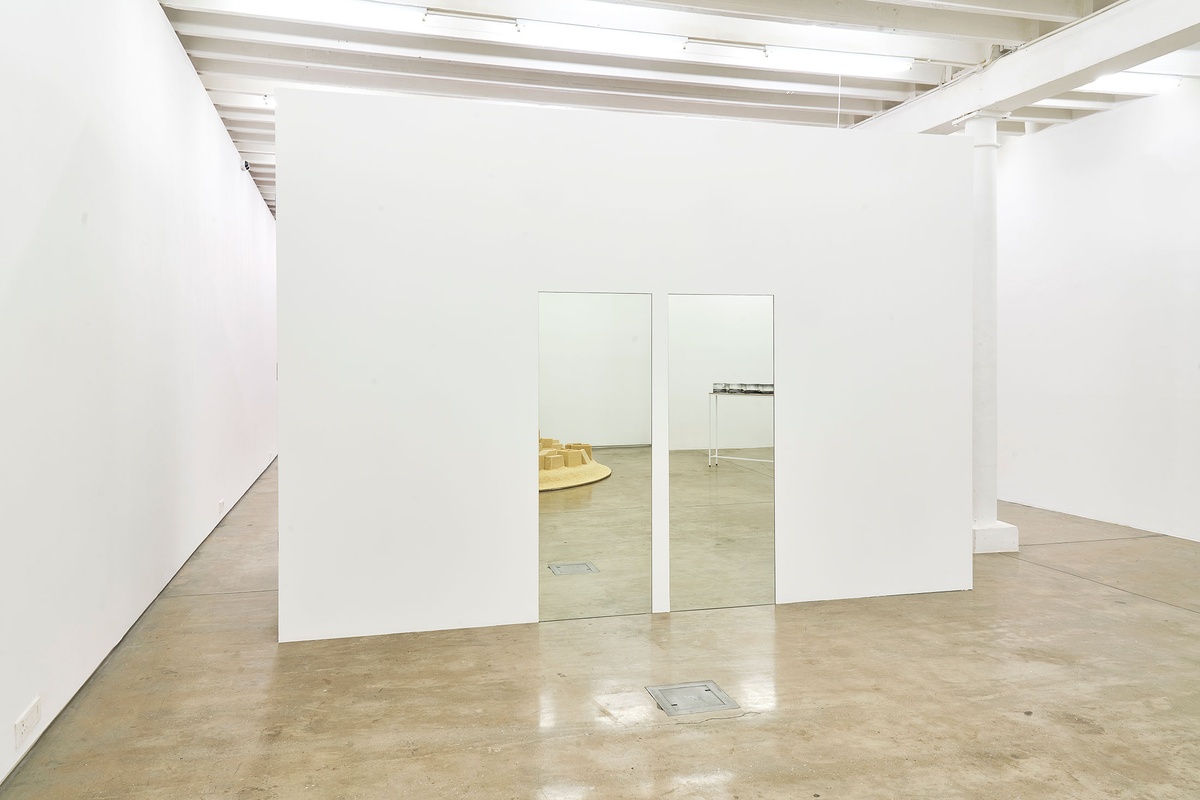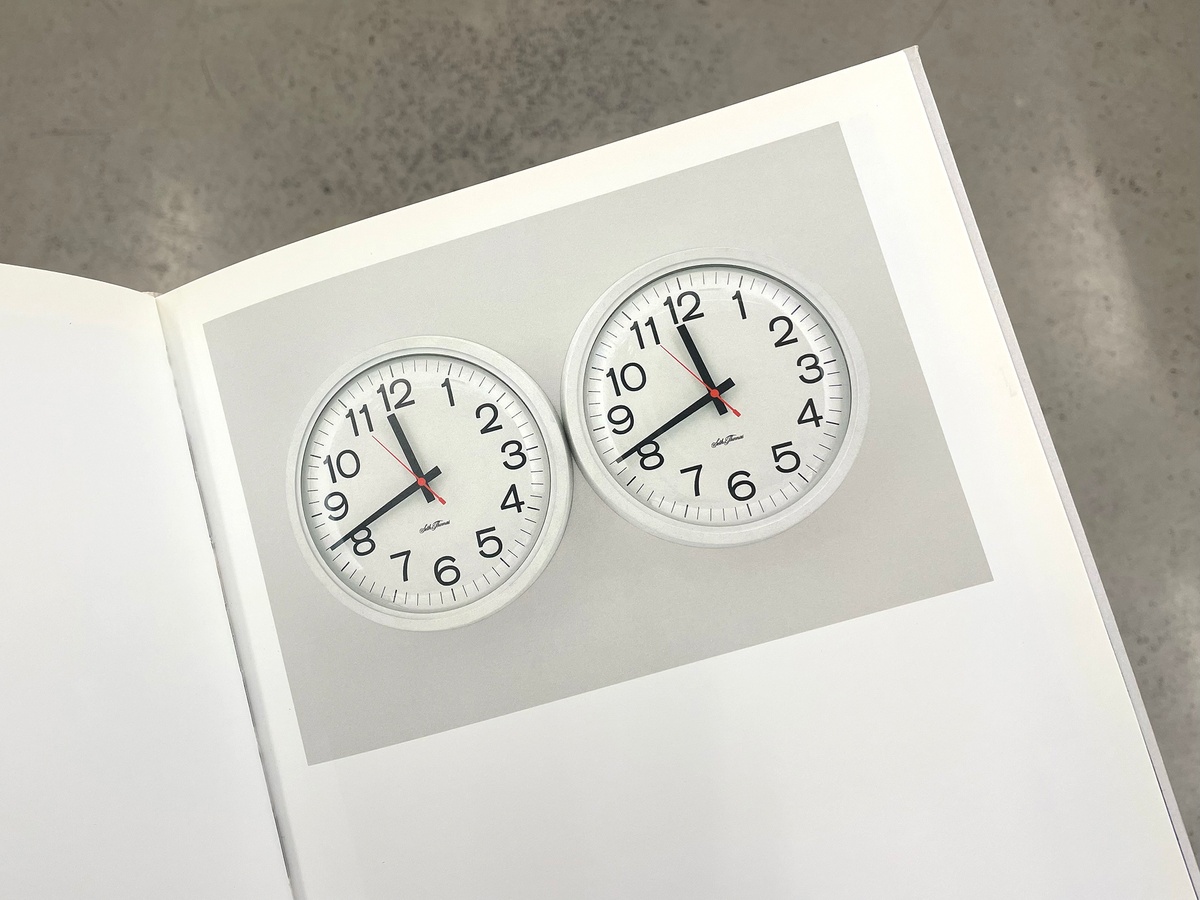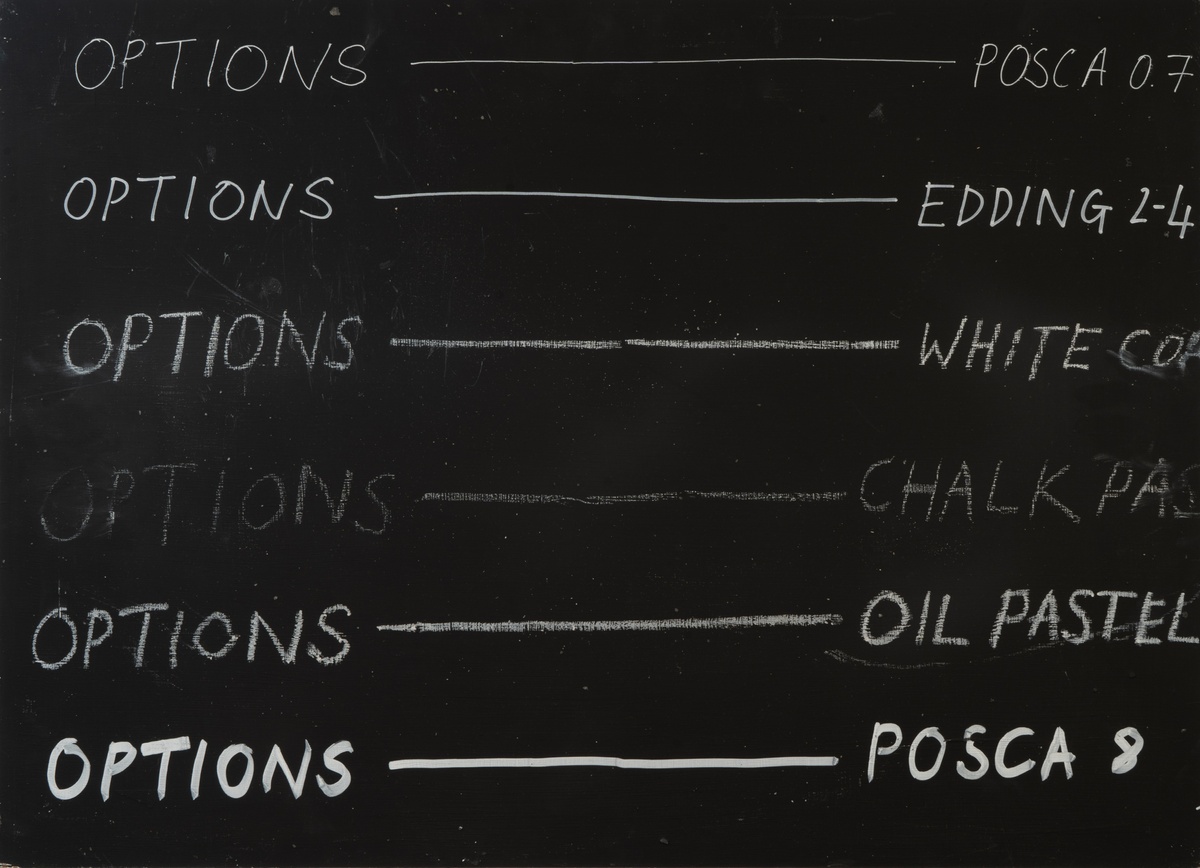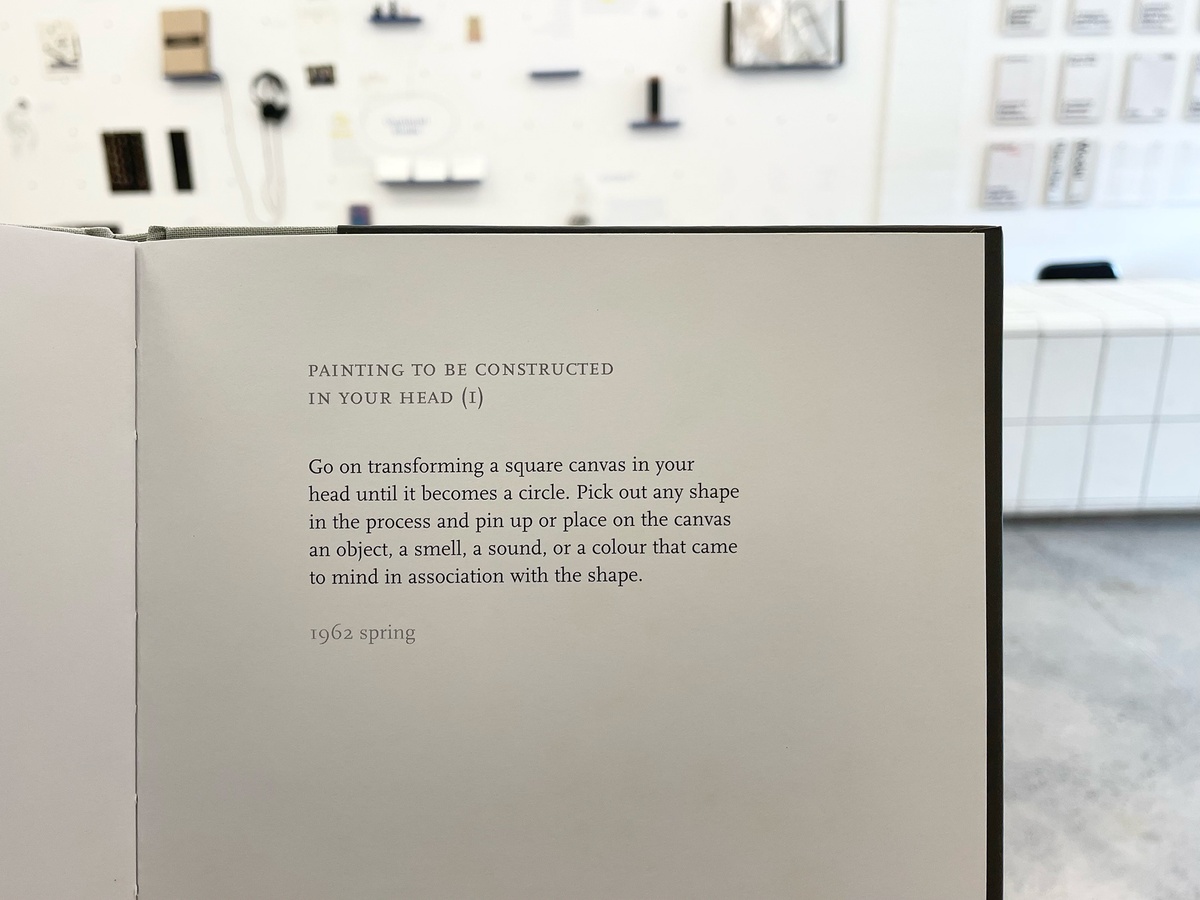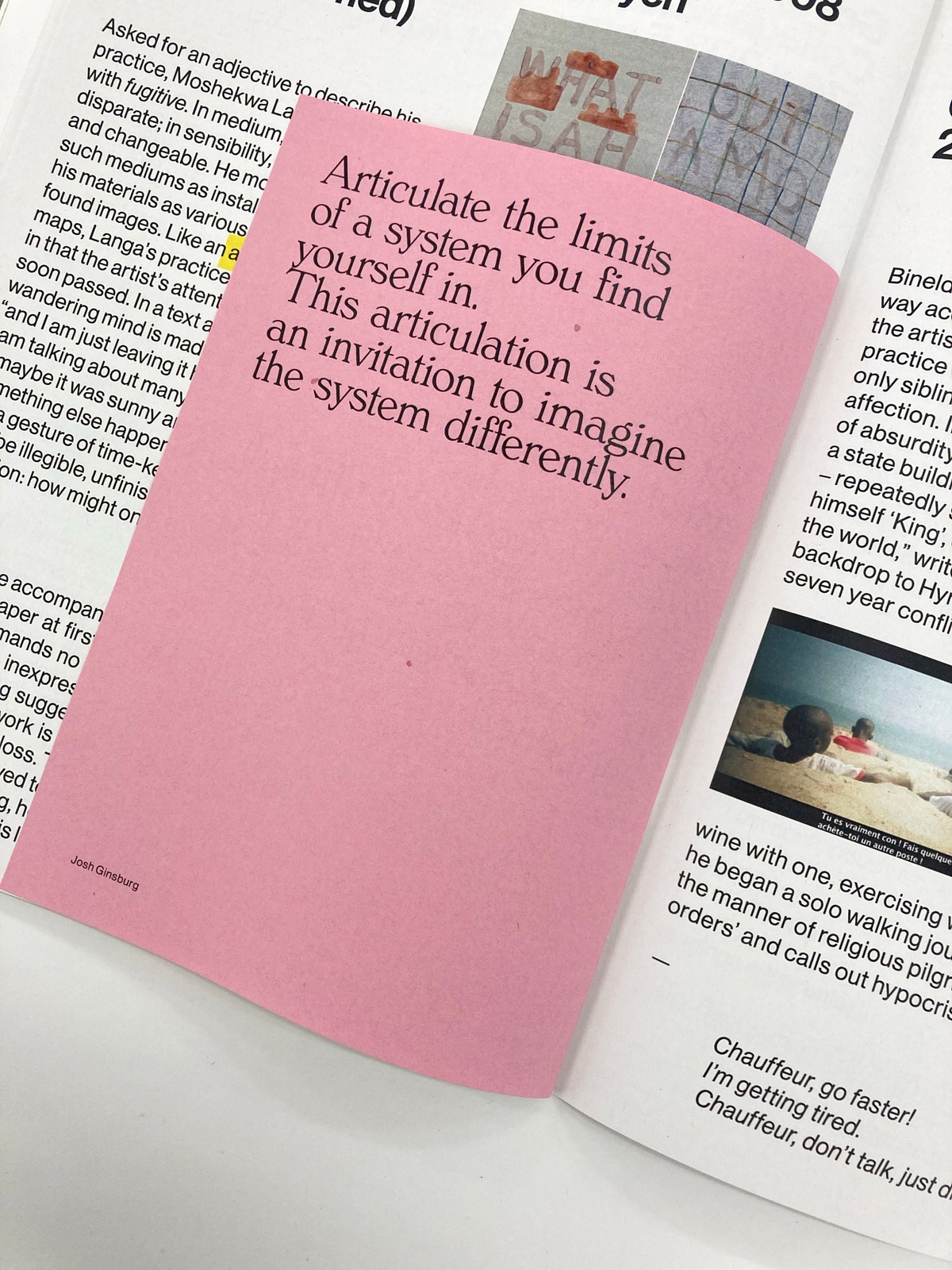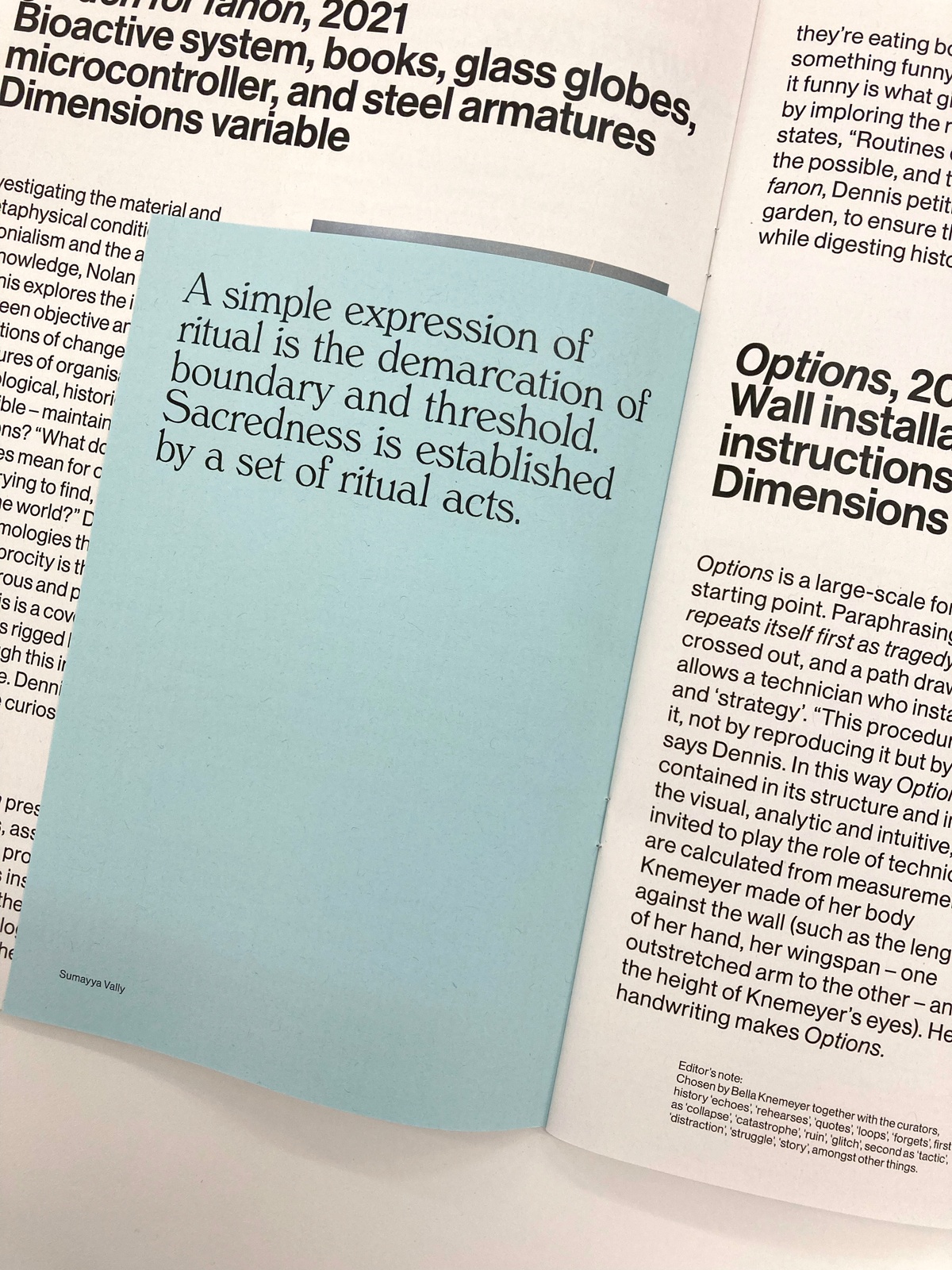Nolan Oswald Dennis
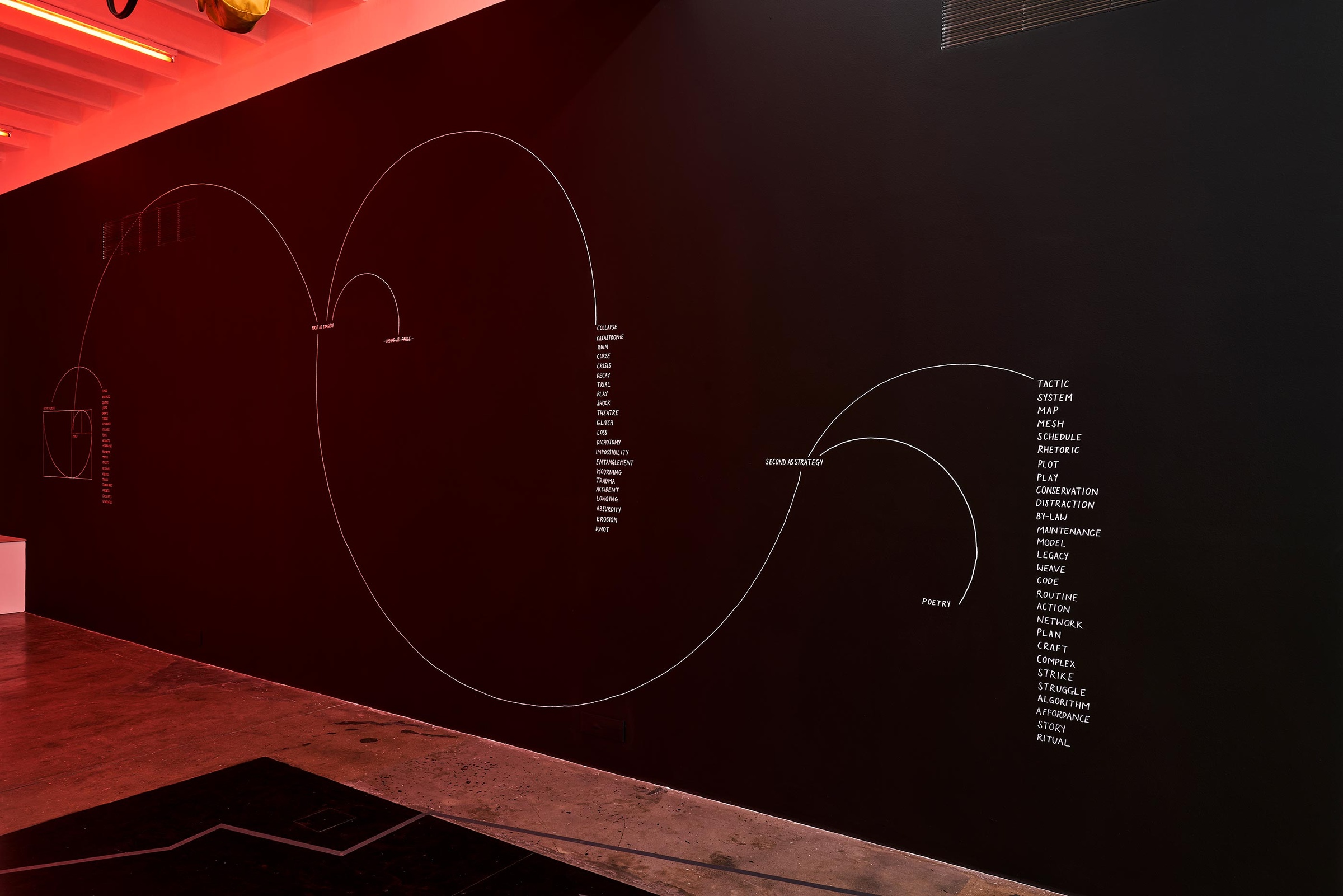
Options is a large-scale formulaic drawing that takes the Fibonacci spiral as a starting point. Paraphrasing German philosopher Karl Marx, it reads: History repeats itself first as tragedy, second as farce. ‘Second as farce’ has been crossed out, and a path drawn to the phrase ‘second as strategy.’ The work allows a technician who installs it to select synonyms for ‘repeats’, ‘tragedy’ and ‘strategy’. “This procedural function allows someone else to engage with it, not by reproducing it but by producing it with space for transformation,” says Dennis. In this way, Options becomes infinitely generative, with change contained in its structure and instructions. It performs between the textual and the visual, analytic and intuitive, past and present. Artist Bella Knemeyer was invited to play the role of technician to install the work for the exhibition Customs at A4. The ratios are calculated from measurements Knemeyer made of her body against the wall (such as the length of her hand, her wingspan – one outstretched arm to the other – and the height of Knemeyer's eyes). Her handwriting makes Options.
Editor’s note: Chosen by Bella Knemeyer together with the curators, history ‘echoes’, ‘rehearses’, ‘quotes’, ‘loops’, ‘forgets’, first as ‘collapse’, ‘catastrophe’, ‘ruin’, ‘glitch’, second as ‘tactic’, ‘distraction’, ‘struggle’, ‘story’, amongst other things.
b.1988, Lusaka
Investigating the material and metaphysical conditions of colonialism, Nolan Oswald Dennis explores the interactions between objective and subjective conditions of change. What structures of organisation – whether technological, historical, the known or invisible – maintain or transform these conditions? “What do these structures mean for our work – the work of trying to find, or make, or change the world?” Dennis asks, his drawings and diagrams offering entry points into the cosmologies that he is preoccupied with; his models inviting strategic play. “Reciprocity is the key mechanic of play that I’m interested in,” says Dennis. “The humorous and playful aspect is the part of the work that operates on the surface – this is a cover underneath which a lot more can happen.” South Africa’s democracy is rigged by the structural and systematic remnants of colonialism, and it is through this invitation to play that the audience can begin to engage in potent critique. Dennis’ practice is equal parts experimental and complex – testing reality with the curiosity of the scholar; the precision of an astrophysicist.

